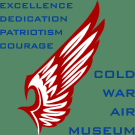This day, November 11th, is also celebrated in many other countries around the world for like reasons even though it may be called by different names. Although our choice of videos and stories is often America-centric, the Cold War Air Museum takes this opportunity to recognize all veterans, of all wars, and of all nations. Our doors are always open to you and your families.
Take time today to think of those who are serving and to thank those around you who have served. And may our special thoughts and prayers be with the men, women and children of our extended military family, both overseas and at home where tragedy recently struck at Fort Hood.
Veteran's Day 2009, may our thoughts and prayers be with you
A special song for Armistice (Veterans) Day
Before leaving our blog today, I want to add a story about a special song. Irving Berlin, a famous American Composer wrote "God Bless America" in 1918, the year of the Armistice, but put it aside at the time. In 1938 with WWII looming on the horizon, the composer, who had a special appreciation for the plight of the Jews in Europe and the freedoms of America, brought forth his song for Kate Smith to perform on National Radio for the Armistice Day program that year.The Song became an instant hit, a second national anthem for all Americans in the 40's and 50's, a signature song for Kate Smith and for Patriotism. The early days of (black and white) national television coincided with the early days of the cold war and stations would often sign on in the morning with the National Anthem and sign off at night with God Bless America. Such patriotic feelings now seem as rare as those black and white televisions.
All royalties from this patriotic song of just 40 words were assigned to the Boy Scouts and Girl Scouts of America by the composer.
We also wish to extend a "thank you" and acknowledgement to the authors of these videos whose credits may be found on YouTube.
































































